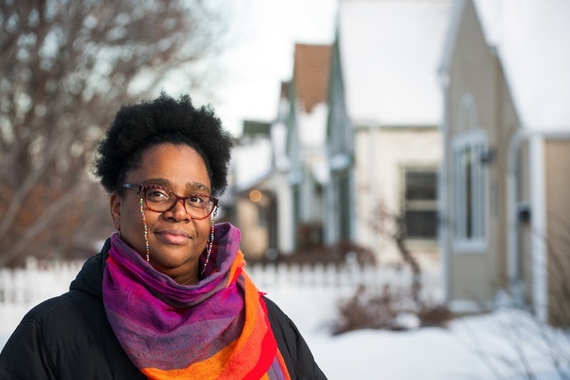Making the Impossible Possible
Professor Ann Waltner recalls a critical crossroads as she was applying to graduate school: Chinese history or European history?
She had taken French, German, and Chinese language courses and enjoyed them all, but in the end, opted for the program she thought would make the most profound impact. “Another good book on 17th-century Europe isn’t going to make much of a difference,” she remembers justifying to herself, “but, because English language literature is still sparse, another good book on 17th-century China will.”
The decision paid off. Today, Waltner is a leading scholar in 16th–18th-century Chinese social history with special interests in literature, family history, and religion (and several good books of her own). And as the college’s 2023 Dean’s Medalist honoree, Waltner continues to make a profound impact—creating new knowledge, training the next generation of China scholars, and inspiring her colleagues in CLA and across the University.
Roots of her research
Waltner began her career in Minnesota in 1987 but the roots of her work formed generations ago. Papermaking technology had evolved during China’s 16th century and printing had “exploded,” which meant that the essays and letters of a moderately famous man could be collected by his sons or sons-in-law to be printed after his death. Many of these works have since been republished online and made digitally searchable.
“If you’re interested in a 16th- or 17th-century topic or person, you can find dozens and dozens of letters written about them,” shares Waltner. “There is a kind of richness of sourcebase that is quite amazing. I don’t think I knew all of that when I picked this time, but it’s a really rewarding period to work in.”
For Waltner, the digitization of these works has allowed her to identify new knowledge and disrupt previously held assumptions. “One of the biggest problems [my work seeks to address] is figuring out appropriate analytical frameworks for a time and place where we’re still assembling what it is we do and don’t know,” she says. “A lot of what we thought we knew a generation and a half ago about Chinese women was that they stayed at home and raised children, which is of course true, but there is so much more we now know about women and gender, through careful reading of sources about women, and even more important, sources (largely poetry) by women."
“If something grabs my imagination, I do it”
The survival of these centuries-old documents has made the impossible possible. Waltner cites the novel Dream of the Red Chamber, published in 1795. Young women in China had been completely entranced by the book and hundreds wrote poems about their emotional response. So, explains Waltner, if you want to know what a 19-year-old girl reading this novel in the year 1803 thought, all you have to do is find a poem that she wrote and read it.
The historian experienced her own emotional response to the novel, too. Last year, she participated in a weekly online reading group organized by scholar Eileen Cheng-yin Chow, first as a guest speaker and then as a co-host, bringing together a global community of readers to tackle Dream of the Red Chamber over several months. The #ReadingTheStone conversations evolved from Twitter to Zoom to Apple Podcasts and amassed a loyal following.
“People say, ‘every Saturday morning for an hour for a year, that’s a lot of hours, that’s a lot of work,’” reflects Waltner. “But if something grabs my imagination, I do it. These were interesting and productive conversations because of the work we’ve been doing all our lives. It was work but it was also such pleasure.”
The “yes, and” leader
Throughout her 36-year-long career, Waltner has made a lasting impact on her colleagues. She served as associate dean for academic programs, chair of the history department, and director of graduate studies (twice), but the role she is especially proud of is the one she helped create: co-founder of the Institute for Advanced Study (IAS), a University-wide interdisciplinary research institute.
The institute began in CLA in 2005 to encourage collaboration—interdisciplinary research and creative work—among members of the University community and broader community. Eventually, it transformed into one of six University Interdisciplinary Centers with service to faculty from all colleges, professional schools, and system campuses at the University of Minnesota.
During her nine years with IAS, Waltner fostered an environment that was inclusive and encouraging. “If I had to boil Ann's extraordinary wonderfulness into one or two ideas, I'd say it's her generosity of spirit and deep curiosity,” says Susannah Smith, current managing director of the IAS. “Her genuine and enthusiastic interest in other people's ideas and projects established the IAS as a place where everyone's work was welcomed. And her generosity of spirit meant that her default answer was always "yes”—making the IAS a "yes, and" organization—we would always start by trying to figure out how to make things work. Ann set the IAS on a truly dynamic path, and I am happy to say that the two subsequent directors have continued this.”
Modeling curiosity
Since returning to the classroom, Waltner strives to model this same zeal and curiosity for her learners. Whether she is teaching about Chinese bronze production, accompanying her class to the Minneapolis Institute of Art, or traveling to Beijing to visit former students, her commitment to building the next generation of China scholars has always been rooted in curiosity.
She recalls running into a former student who shared the lasting impact of her words. “Hey Professor Waltner, he had said, I watch the news and can’t help but think about something you shared in lecture: once you start letting ideas in, you can’t control where they go.”
“And that,” she says, “made me really happy.”



